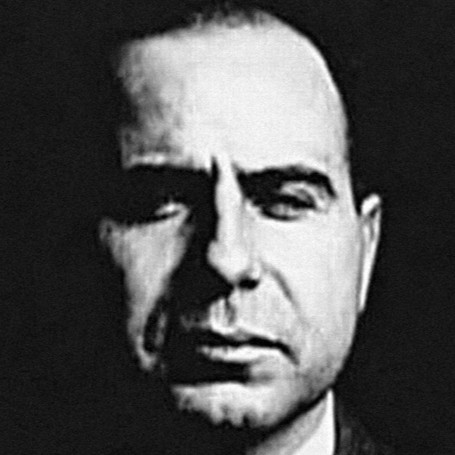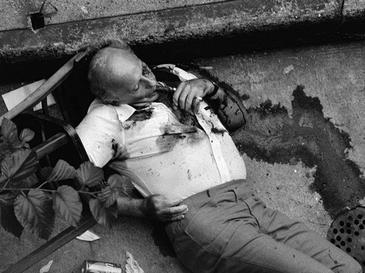
1910 - 1979
Camillo Carmine Galante
Summary
Name:
Nickname:
Lilo / The Cigar / The Heroin DonYears Active:
1925 - 1979Birth:
February 21, 1910Status:
DeceasedClass:
MurdererVictims:
80+Method:
ShootingDeath:
July 12, 1979Nationality:
USA
1910 - 1979
Camillo Carmine Galante
Summary: Murderer
Name:
Camillo Carmine GalanteNickname:
Lilo / The Cigar / The Heroin DonStatus:
DeceasedVictims:
80+Method:
ShootingNationality:
USABirth:
February 21, 1910Death:
July 12, 1979Years Active:
1925 - 1979Date Convicted:
February 8, 1931bio
Camillo Carmine Galante was born on 21 February 1910 in East Harlem, Manhattan, to Sicilian immigrant parents Vincenzo “James” Galante and Vincenza Russo, who had emigrated from Castellammare del Golfo in 1906. His father was a fisherman who settled in the Italian-American neighborhoods of New York City. Carmine was one of five siblings: brothers Samuel and Peter, and sisters Josephine and Angelina.
From an early age, Galante showed signs of delinquency. By the age of 10, he had already been sent to reform school. As a teenager, he dropped out of school in the seventh grade and formed a juvenile street gang on the Lower East Side. He spent time working as a fish sorter and in an artificial flower shop, but quickly gravitated to organized crime during the Prohibition era, becoming a trusted enforcer in the Italian-American underworld.
In 1925, at just 15 years old, Galante was arrested for assault, and by the following year, sentenced to state prison. By 1930, he was already suspected of committing serious violent crimes. That year, he was arrested for the murder of police officer Walter DeCastilla during a payroll robbery but was never indicted. Later that year, during a hijacking attempt in Brooklyn, he shot NYPD Officer Joseph Meenahan and wounded a six-year-old bystander. He was convicted of attempted robbery and sentenced in 1931 to 12.5 years in prison. He was paroled in 1939, violated parole, and returned to prison before being released again in 1944.
Galante’s rap sheet by the 1940s included robbery, assault, and suspected homicide. A 1931 psychological evaluation classified him as having a “psychopathic personality.” Despite this, Galante was able to gain increasing power in the Mafia, working under Vito Genovese, then underboss of the Luciano crime family.
During World War II, Galante was allegedly involved in a politically motivated murder. On 11 January 1943, Carlo Tresca, an Italian-American anti-fascist newspaper editor and outspoken critic of Mussolini, was shot dead on Fifth Avenue. Law enforcement and the FBI believed Genovese, then in exile in Italy, ordered the hit as a favor to Mussolini. Galante, it is alleged, carried out the execution. He was arrested but never charged in connection with Tresca’s assassination.
murder story
Carmine Galante’s criminal trajectory began at a disturbingly young age. Sent to reform school at 10 for his early delinquency, he quickly formed a juvenile street gang in NYC’s Lower East Side. By 15, he’d dropped out of school and was already involved in serious criminality, pledging guilty to assault on December 12, 1925, and subsequently receiving a two-and-a-half-year sentence on December 22, 1926.
In August 1930, Galante was arrested for the murder of Officer Walter DeCastilla during a payroll heist, but the case never stuck. In that same year, Galante was wounded in a shootout while hijacking a truck in Brooklyn, police officer Joseph Meenahan and a six-year-old bystander were injured but survived. His violent streak culminated on February 8, 1931, when he pleaded guilty to attempted robbery and was sent away for 12½ years. His release came via parole on May 1, 1939.
By the early 1940s, Galante had firmly entrenched himself in the Mafia’s enforcer role, working under underboss Vito Genovese. His reputation was chilling—law enforcement suspected him of involvement in something between 80 to 100 murders.
On January 11, 1943, Galante is believed to have assassinated Carlo Tresca, publisher of an anti-fascist newspaper, outside his Manhattan office. The crime was reportedly ordered by Genovese as a favor to Mussolini, though no formal charges were ever filed. Galante was sent back to prison for parole violations, only to be released again on December 21, 1944.
In 1953, Joseph Bonanno tapped him to build the family’s drug empire in Montreal, forming an alliance with Vincenzo Cotroni of the Cotroni crime family. Together, they ran the French Connection heroin pipeline—smuggling in vast shipments of heroin to the U.S., and reportedly earning up to $50 million annually from gambling rackets. In April 1956, Canadian authorities expelled him for egregious extortion tactics.
Fleeing indictment for drug trafficking, Galante lay low until June 3, 1959, when New Jersey State Police caught him on the Garden State Parkway. He posted $100,000 bail and remained free. On May 18, 1960, he surrendered to a fresh set of charges.
His first trial, which began November 21, 1960, was nothing short of chaotic—with jurors falling ill, intimidation tactics, and dramatic courtroom showmanship leading to a mistrial declared on May 15, 1961. Galante walked away with 20 days in jail for contempt. The second trial was less forgiving. On July 10, 1962, he was convicted of drug trafficking and sentenced to 20 years in federal prison plus a $20,000 fine.
Galante’s parole came in January 1974, just in time for a brazen power move—he allegedly bombed the doors of Frank Costello’s mausoleum in St. Michael’s Cemetery.
By July 12, 1979, Carmine Galante had positioned himself as the de facto head of the Bonanno family. His swagger topped only by his brutality, he had ruffled feathers across the Mafia Commission and among rival families. Unchecked ambition in the Mafia always demands a price.
Galante’s lunch that day wasn’t casual, it was a setup. Around 1 p.m., Galante, his cousin Giuseppe “Joe” Turano, capo Leonard Coppola, and his two Sicilian bodyguards, Baldassare Amato and Cesare Bonventre, convened at Joe & Mary’s Italian‑American Restaurant on Knickerbocker Avenue in Brooklyn for an outdoor courtyard lunch.
They were not alone in plotting—behind the scenes, Bonanno boss Philip Rastelli had enlisted the help of other families. With approval from the Mafia Commission, Rastelli, aided by Joseph Massino, orchestrated Galante’s deadly overthrow. The hit was made even smoother by persuading Galante’s own bodyguards—Amato and Bonventre, to betray him, dangling power and promotions in exchange for cooperation.
As the clock ticked closer to 2:45 p.m.,he sat eating lunch on a patio at Joe & Mary’s Italian-American Restaurant in Bushwick, Brooklyn. After dessert, just as Galante leaned back, lighting up that iconic cigar, three ski‑masked assassins stormed the property. One voice eerily cracked, “In the back, Sally.” Then they charged straight into the courtyard, guns blazing.
Turano, in a last instinctive move, rose and sputtered, “What are you guys doing?” But the response was a spray of bullets—shotguns and handguns unleashed death at close range. Galante, Coppola, and Turano were killed outright.

The hit was widely believed to be orchestrated by Rastelli and approved by the Mafia Commission, in collusion with the Gambino and Genovese families. Anthony Indelicato and others were later convicted for their roles. Galante was buried at Saint John's Cemetery in Queens.